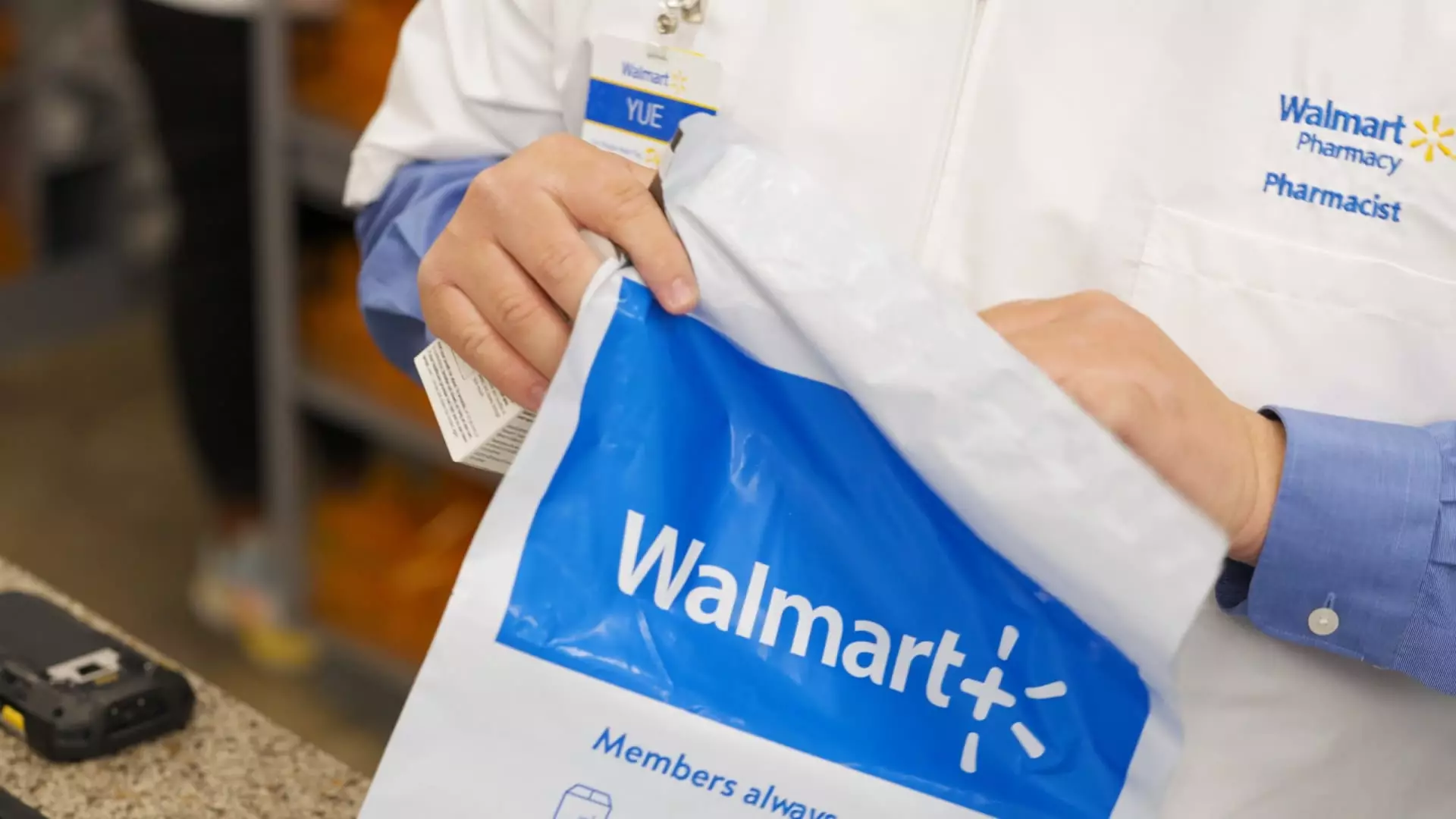As major pharmacy chains like CVS and Walgreens grapple with declining profits and a changing retail environment, Walmart is positioning itself at the forefront of convenience-driven health care solutions. The retail giant recently announced the launch of a prescription delivery service, marking a significant shift in how consumers access their medications. With an ambitious goal of expanding this service across nearly all states, Walmart is poised to disrupt the traditional pharmacy model.
Walmart’s delivery service, now available in six states including Arkansas and New York, aims to provide a seamless shopping experience by offering a combination of medications and everyday essentials. This service responds to customer feedback, with Walmart’s chief e-commerce officer, Tom Ward, stating that pharmacy delivery is the most requested service from shoppers. Unlike the traditional model of visiting a pharmacy, customers can now receive prescriptions alongside common household items, effectively streamlining their shopping experiences.
The convenience factor cannot be overemphasized; as more households prioritize efficiency in their daily routines, the ability to have prescriptions delivered directly to doorsteps is likely to attract a substantial customer base. By integrating pharmacy delivery with general merchandise, Walmart not only enhances customer satisfaction but also encourages brand loyalty as consumers increasingly value one-stop shopping.
The impact of Walmart’s prescription delivery service extends beyond mere convenience; it also poses a formidable challenge to established players in the medication market. While CVS and Walgreens currently offer various delivery options, including same-day service, Walmart’s bundling of prescriptions with other products could appeal to a broader demographic. Given that CVS holds over 25% of the U.S. pharmacy market share compared to Walmart’s 5%, the latter’s entrance into this delivery space is a strategic move that could chip away at this dominance.
In light of growing competition from Walmart and online giants like Amazon, CVS and Walgreens are reevaluating their business strategies. With CVS facing pressures from declining stock prices and activist investors, the stakes are high. Their recent restructuring, including executive changes and plans to cut $2 billion in expenses, underscores the urgency of adapting to shifting consumer demands. Walgreens mirrors this pivot, announcing store closures as it confronts similar pressures.
Walmart’s delivery service is not just about convenience; it is also designed with safety in mind. The delivery of prescriptions will involve tamper-evident packaging and the capability for customers to track their orders in real time, providing peace of mind. Additionally, by facilitating consultations with pharmacists over the phone, Walmart ensures that essential information flows freely between the pharmacy and the customer, a critical aspect of responsible medication management.
For Walmart, this initiative aligns with its broader strategy to enhance its health and wellness offerings, which currently account for about 12% of its U.S. revenue. Given the increasing consumer focus on health, diversifying its service portfolio is not merely an alternative revenue stream; it represents a proactive approach to positioning itself as a key player in the health care sector.
While Walmart’s recent market performance demonstrates its resilience, pharmacies are facing significant financial headwinds. CVS’s recent leadership change and Walgreens’ announcements of store closures highlight an industry under duress. Amidst falling reimbursement rates and fierce competition, both CVS and Walgreens struggle with profitability, particularly within their retail spaces.
Conversely, Walmart’s stock has seen an impressive increase, up 54% so far this year, suggesting that the comprehensive approach to integrating services fosters investor confidence. With customer preferences shifting towards convenience and health-centric offerings, Walmart’s expansion into online health services stands to capitalize on this momentum.
Walmart’s healthcare delivery service is a bold move aimed at transforming pharmacy access for American consumers while emphasizing convenience, affordability, and trust. As the landscape of pharmacy and retail evolves, Walmart’s strategy could serve as both a model for success and a cautionary tale for traditional drugstore chains struggling to keep pace with changing consumer needs. The coming months will be pivotal for all players in the market as they adapt to increasing competition and shifting expectations, but one thing is clear: the way we think about pharmacy and health services is changing dramatically.

